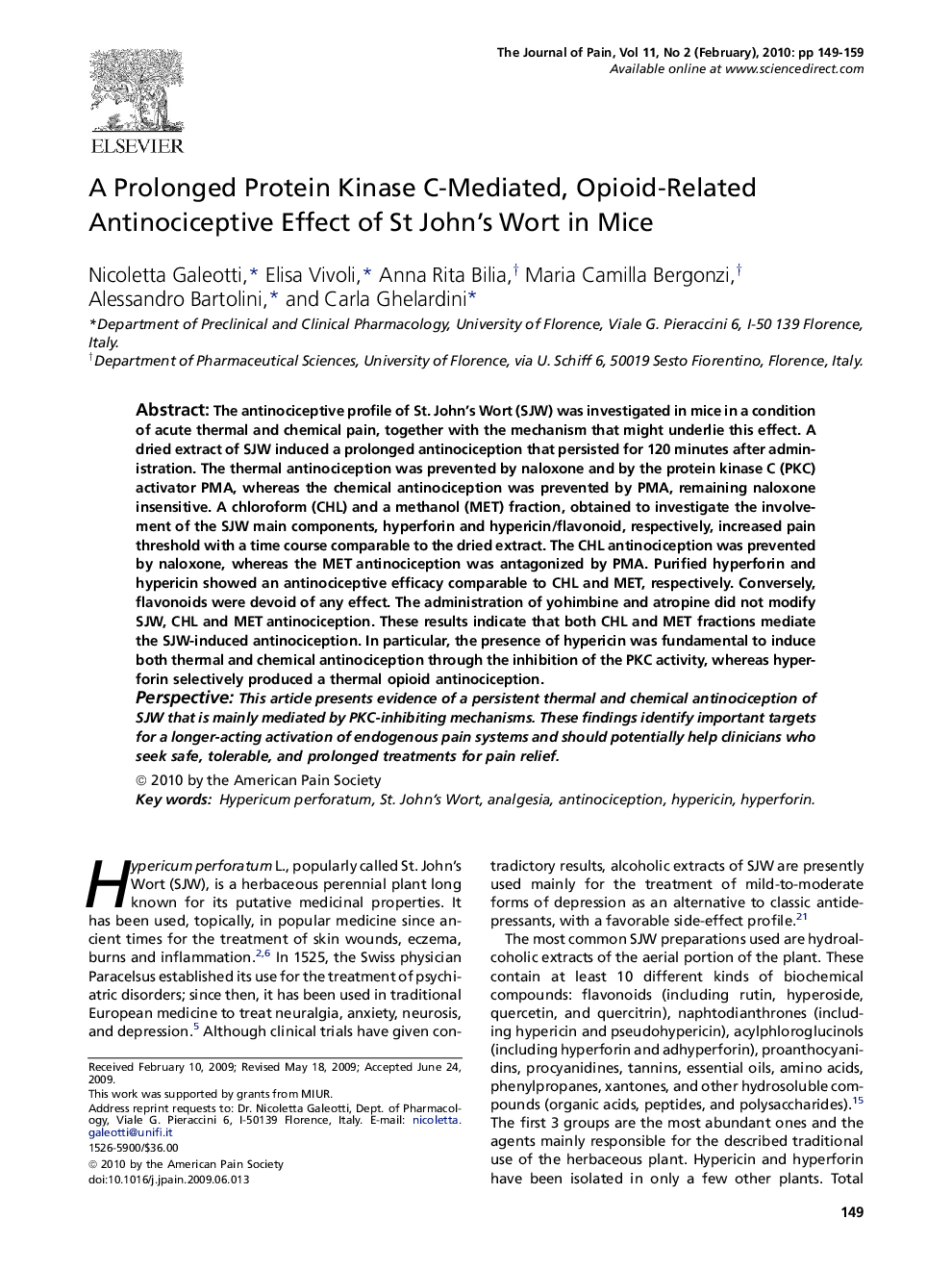| Article ID | Journal | Published Year | Pages | File Type |
|---|---|---|---|---|
| 2729476 | The Journal of Pain | 2010 | 11 Pages |
The antinociceptive profile of St. John's Wort (SJW) was investigated in mice in a condition of acute thermal and chemical pain, together with the mechanism that might underlie this effect. A dried extract of SJW induced a prolonged antinociception that persisted for 120 minutes after administration. The thermal antinociception was prevented by naloxone and by the protein kinase C (PKC) activator PMA, whereas the chemical antinociception was prevented by PMA, remaining naloxone insensitive. A chloroform (CHL) and a methanol (MET) fraction, obtained to investigate the involvement of the SJW main components, hyperforin and hypericin/flavonoid, respectively, increased pain threshold with a time course comparable to the dried extract. The CHL antinociception was prevented by naloxone, whereas the MET antinociception was antagonized by PMA. Purified hyperforin and hypericin showed an antinociceptive efficacy comparable to CHL and MET, respectively. Conversely, flavonoids were devoid of any effect. The administration of yohimbine and atropine did not modify SJW, CHL and MET antinociception. These results indicate that both CHL and MET fractions mediate the SJW-induced antinociception. In particular, the presence of hypericin was fundamental to induce both thermal and chemical antinociception through the inhibition of the PKC activity, whereas hyperforin selectively produced a thermal opioid antinociception.PerspectiveThis article presents evidence of a persistent thermal and chemical antinociception of SJW that is mainly mediated by PKC-inhibiting mechanisms. These findings identify important targets for a longer-acting activation of endogenous pain systems and should potentially help clinicians who seek safe, tolerable, and prolonged treatments for pain relief.
